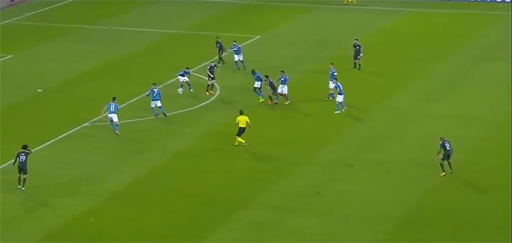WORLD CLASS COACHING
Winning With Inverted Fullbacks - Defending
By Luca Bertolini
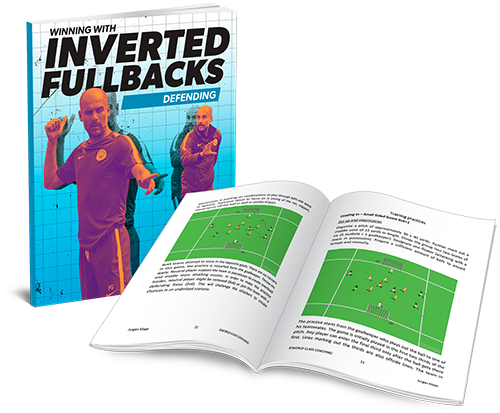
Table of Contents
PART THREE
HIGH PRESSURE AND COUNTER PRESSING
DRILLS AND EXERCISES
A need: the first kind of inverted fullback
But again, we must "thank" Pep Guardiola for believing in principles of play rather than in the roles on the field. Principles of play are followed both during the possession phases of play and during the defense phases of play.
High pressure with equal number of players and counter pressing are the main principles of play that allow Pep's Manchester City to play with inverted fullbacks and to revolutionize the idea of defense phase and of players’ positions.
If we want to sum up this concept, we could say: defend with common principles of play rather than with positions and roles.
1) Press high when the opponent is building up. Two of three midfielders, De Bruyne and Gundogan, are playing a 3 v 3 duel on the same line of the forwards. Both the center defenders and the playmaker of the opposition are under pressure.
The wingers, Sanè and Sterling, are covering the half spaces and the chance of vertical passes together with the center balance midfielder Fernandinho.
Sanè and Sterling would be able to press both toward the center against the opposition midfielders Allan and Hamsik, and toward the opposition right and left fullbacks.
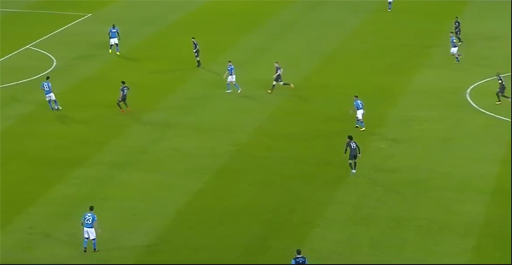
These positions and pressure tactics couldn't be possible without the support of the inverted fullbacks inside the center spaces in the middle third; if they weren't there, there would be space for the opposition to be exploited behind the wingers and to counter attack.
Here again a 2 v 2 duel is played on the opposition's center backs and a potential 3 v 3 duel on the opposition midfield trio; and again, Gundogan and De Bruyne can press high thanks to the inverted fullbacks in the middle third.
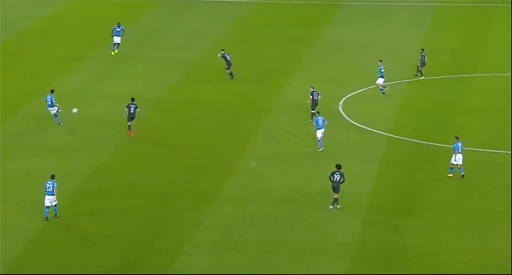
A 3 v 3 duel is being played against the opposition goalkeeper and the center backs. De Bruyne and Gundogan are playing as center forwards here.
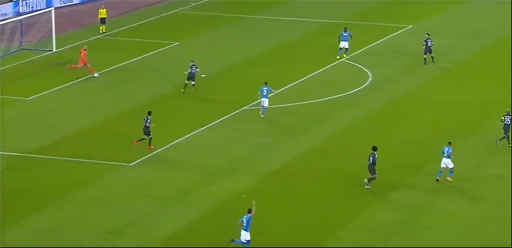
When the first pressure is overcome, the inverted fullbacks are ready to play against the opposition midfielders or forwards in the middle third, together with the balancing midfielder.
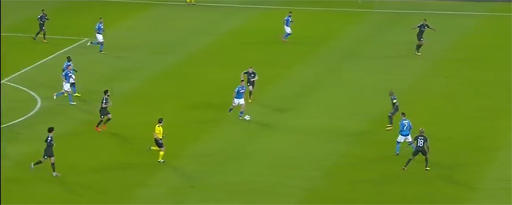
Danilo is very high on the right here to be close to the opposition left winger, and Delph and Fernandinho are on Calleon, and they are ready to play a 2 v 1 duel against him. Having the first pressure line overcome by the opposition means to have half of the players on the other side of the ball, and the inverted fullbacks have now a very important role of balance.
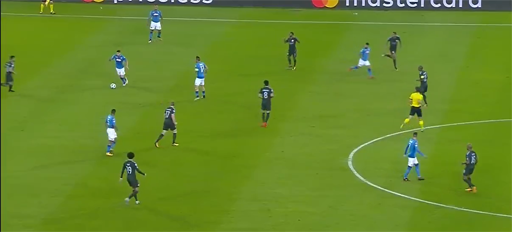
They usually mark the opposition forwards on (Delph is on Calleon, the right winger and Danilo runs toward the center to close the space that could be exploited by Insigne, the left inverted winger of Napoli); this way, they allows the five players, who are usually placed very high on the field, to cover the spaces between the lines and then to be placed between the midfield and the attacking lines of Napoli.
2) Equal number of players near the ball in the middle third. The concept of balance for Guardiola is again very revolutionary during these seasons as Manchester City manager.
To be balanced means to have the same number of players near the ball and another player near it, but out of the high density area.
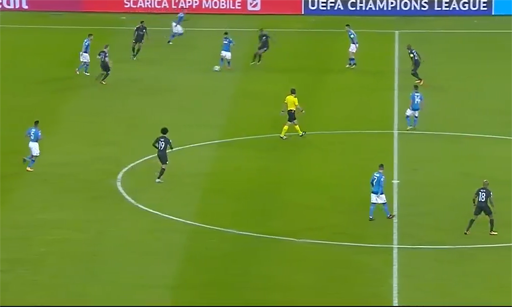
In these kinds of duels, the inverted fullbacks become very important. A 3 v 3 duel is being played on the right side of Man City here, and the right fullback Danilo is taking part as third player on the ball, together with Sterling and De Bruyne.
Fernandinho is just out of the ball's area and he can create a bigger 4 v 4 duel if the opposition midfielder receives the ball.
The opposite fullback Delph can cover the space against the nearest forward of the opposition, being already placed in the center of the middle third. The inverted fullbacks become balance players in this defensive tactical idea.
In this second example Fernandinho is recovering the space from the center of the middle third to create a 2 v 2 duel and the fullback is a balancing player just out of the ball's area, covering spaces that could be exploited by the opposition's winger.
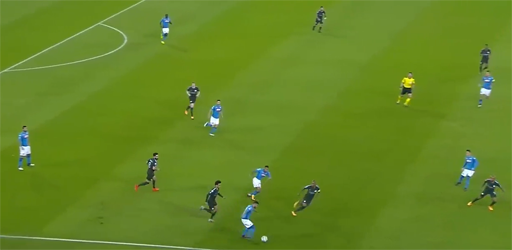
Let's now have a look to this move: a general 7 v 6 duel with numerical advantage situation for Manchester City can be noticed inside the opposition half. A double 2 v 1 duel is played on the ball (Sanè and Gundogan against Allan) and on the easiest passing option for the opponents in possession (Fernandinho and Delph against Callejon).
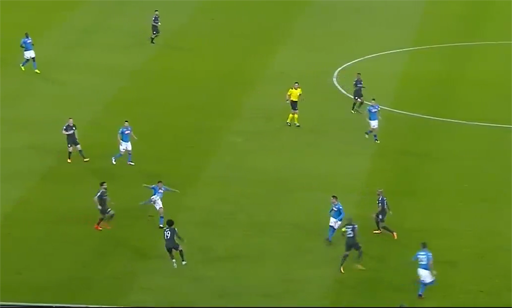
These following moves are two examples of numerical advantage on the ball (3 v 1), where the left fullback Delph ensures balance in the first example,
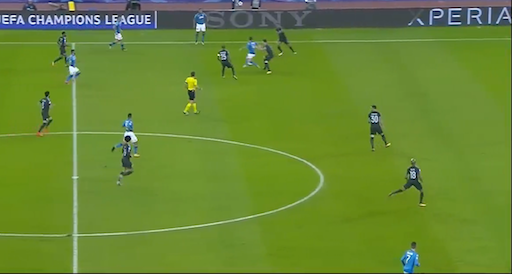
and he takes part to the pressure phase during the second one, where the opposition possession phase is directed backwards.
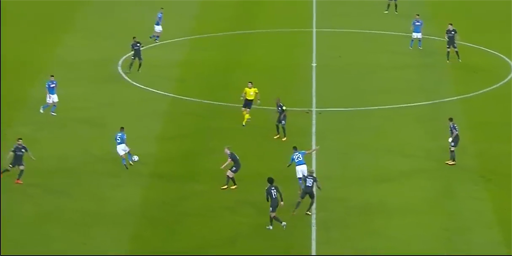
3) Counter pressing phase. As the inverted fullbacks are often placed in the middle third and high on the field, they also take active part in the transition to defend phases. These phases for Guardiola teams mean moreover counter pressing phases.
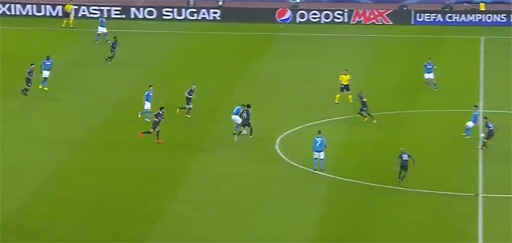
They can play as balance players, if the first or the second opponent in possession is already under the pressure of a teammate, like Delph in this move, where Sanè is already on the ball and two other midfielders, De Bruyne and Gundogan, are very close to the ball as well.
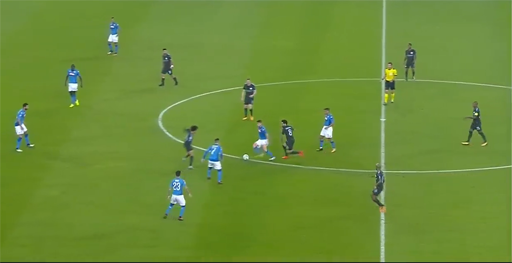
In this second example, Delph on the left and Danilo on the right, are saving the defense half together with Fernandinho, the balance center midfielders, during a 2 v 2 duel on the ball.
As we already realized in the first pages of this e-book, as the inverted fullback plays usually in the center during the possession phases, when the ball is lost they are able to mark or to put pressure on the opposition forward, to avoid counter attacks first of all. For this reason they can take active part to the counter pressing phase, marking or disturbing the opposition attackers, if forward passes are played.
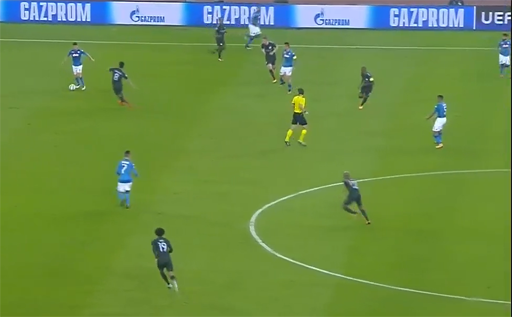
In this move, Delph is sprinting toward his direct opponent, Callejon, to press him as he receives the first pass after having the possession back.
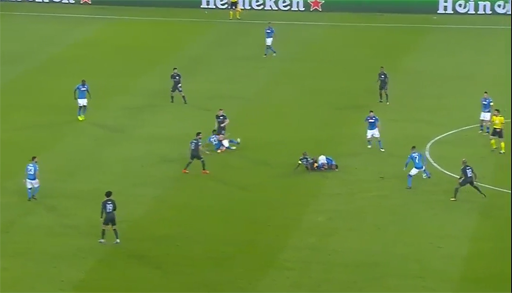
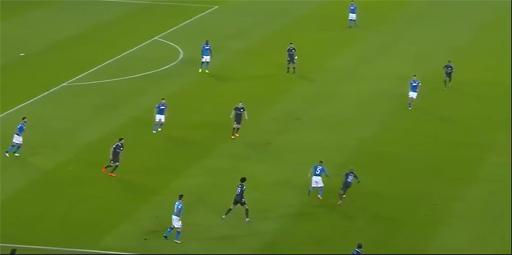
In this second example Delph is pressing the oppoisiton midfielder, Allan, to send him backwards and prevent him from playing out.
It's very intersting to notice how the fulbacks alternate thier positions, depending on the side where the counter pressing is being carried out.
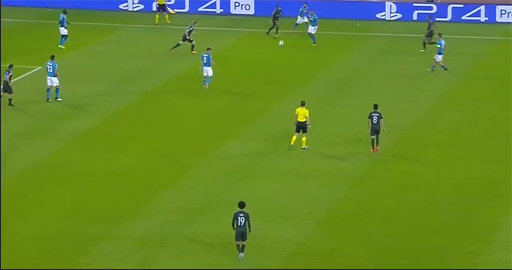
Danilol, the righ fullback, is taking part to a wide duel to win the ball back,
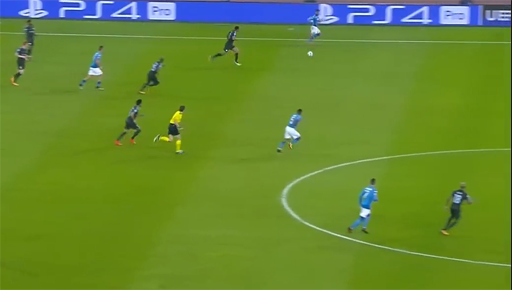
and the left fullback Delph is covering the center space in the middle third, as the first pressure has been overcome.
Another intersting point of view is the 1 v 1 mark he brought against Calleon for the whole match against Napoli, during this 2017/2018 Champions League match.
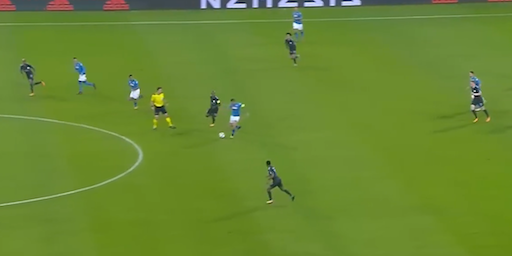
Here Delph is closing the space toward the center again, during a similar move, where the first pressure was overcome.
So, if we sum up all the characteristics of a modern "Inverted Fullback,” or if we sum what Gaurdiola made of an originally wide and defensive role, we could write:
1) he is able to recover the space during the opposition counter attacks, starting form a center and advanced position,
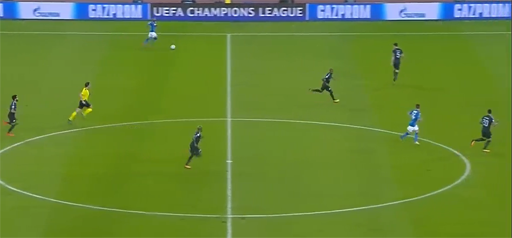
as well as to play as a center back during the defense phase, if needed.
2) He takes part in the building up phases of play in the first third
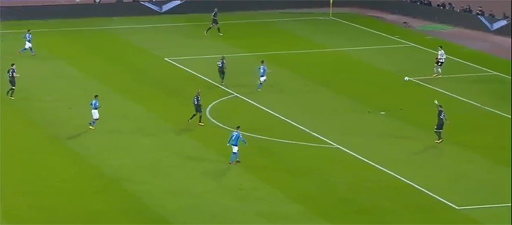
and he can play out toward the middle third.
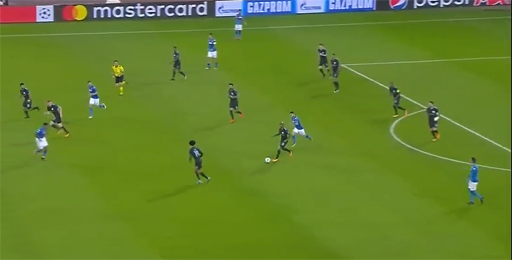
3) he can be a playmaker to manage the second balls in the middle third.
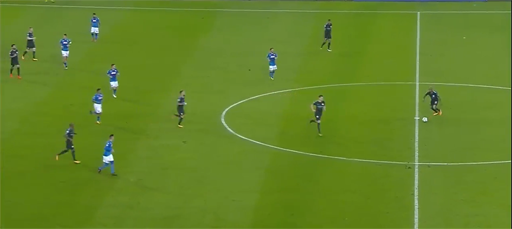
4) He is able to be decisive in the final third.
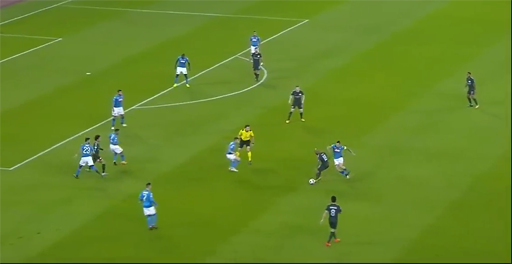
5) He can provide balance during the finishing phases of the possession.
